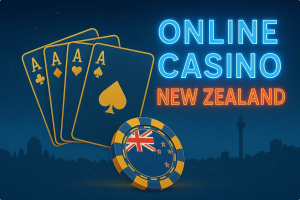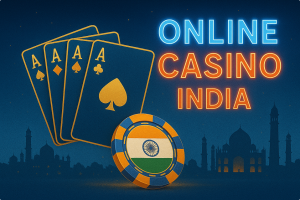
Online Casino South Africa

Online Casino New Zealand

Online Casino India

Online Casino Australia

Online Casino UK

Online Casino Canada

Online Casinos
——————————————————————-
On request, I’ve decided to make a dedicated thread for all my Super NES real hardware digital soundtracks:
These soundtracks are direct digital rips from original Super NES hardware that has been modified with a digital-to-digital transmitter board. The Super NES is actually rather unique among the old consoles in that it generates a digital sound signal before sending it to an analog converter, and as such, mod boards with a digital transmitter can output the digital music & sound of the SNES directly. Here’s my RW mod board that supports both coaxial and optical digital (installed in this SNES with a coaxial jack as a no-cut option):
So these digital output mods have the advantage of completely bypassing the analog converter, allowing for absolutely CRISP sounding music files with FLAWLESS stereo directional properties. My soundtracks are meant for the purists who would rather have music generated from original Super NES consoles without resorting to emulation, yet at the same time, has the clarity of pure digital sound. Pros and cons below:
Pros:
1. Taken from actual Super NES hardware (for the console purists).
2. 100% digital-to-digital transfer.
3. No downmixing or upmixing at any point (raw 32,000 Hz FLAC file output).
4. All files tagged with title, track, and composer data, as well as in-game screenshot cover art.
5. Lossless FLAC codec format.
Cons:
1. Files are considerably larger than SPC format (SPC often used in emulation addons for music players).
Below are the currently completed soundtracks:
Thanks, can you make 44100khz?
Resampling likely would dilute the original recording to where it no longer is ‘bit-perfect’. As such, I won’t do that, not to mention it is wasted space anyway.
However, you can easily do this yourself if you’re wanting to make audio CDs for example. Just have a sound program batch-process the tracks into 44.1Khz.
Also could you please remove the quote in your post? Your quote will show old download links that no longer work.
And I agree, 32,055Khz is perfect, don’t use 44100khz! 🙂
The only other person I know besides you who did this was theIronGoat on ffshrine.
He did only 5 osts for the Super Famicom though, I think. (he did much more for the Megadrive)
I hope you’ll do many more! 🙂
We need more real hardware soundtracks! 🙂
What will you do next?
And I agree, 32,055Khz is perfect, don’t use 44100khz! 🙂
What will you do next?
Thanks! Although I realized I used the term "KHz" when I meant to say "Hz" so I corrected the typo. 😉
I plan on knocking out FF 4, 5, and 6, as well as several personal favorites like Demons Crest, Contra III, Super Turrican, Super Metroid, Secret of Mana, Actraiser, and some others. Then I’ll start doing requests based on if the soundtrack appeals to me.
Bring them all on!
Just one question – I only barely looked into the s/pdif mod for the SNES, however I remember reading something about the sampling rate being non-standard and having to be resampled before adding a coax or toslink out – was there any truth to this ?
Just one question – I only barely looked into the s/pdif mod for the SNES, however I remember reading something about the sampling rate being non-standard and having to be resampled before adding a coax or toslink out – was there any truth to this ?
The sample rate is in fact non-standard, but my TOSLINK mod does not resample/convert the signal. As such it wouldn’t work with most devices. I had to shop around until I found a device that would pass the signal unmolested to the recording software I use. This is why my recordings also come out a non-standard 32,055 Hz, which reflects the clock rate of my specific SNES console.
It’s been reported the variation ‘swing’ of Super NES console output rate is 32,020 to as high as 32,090. It just so happened my Super NES split the difference at 32,055.
It’s been reported the variation ‘swing’ of Super NES console output rate is 32,020 to as high as 32,090. It just so happened my Super NES split the difference at 32,055.
I see, very interesting. Thanks for the info and all your hard work putting these together – these may well be the best SNES rips available. It’s a mod I have yet to do to my console (amongst many others… I procrastinate very badly with these things) but from what I can read up on this it seems the varying sample rates has to do with the ceramic oscillators Nintendo used as a cost cutting measure. One thing I’d want to look into is installing a more accurate crystal oscillator that gets the console clocked to the standard 32khz as intended – and then capture some game OSTs at that point. Those could prove to be definitive! (And have the additional benefit of being able to be played back with more standard gear without software resampling upon playback)
If you want a flat 32,000 Hz playback rate, the tracks I have already recorded can easily be set to that speed in a sound editor program. The downside is they will sound ever-so-slightly slower than the current 32,055 hz. Most people wouldn’t notice the difference though. My OCD only caught it after several tracks I had listened to.
Now resampling on the other hand, would retain speed, but then you run into dilution/distortion of the original wave data.
At any rate, I’m perfectly happy with what I’m doing right now. Changing the SNES oscillators to output a perfect 32,000 Hz would no longer be faithful to the original sound IMO anyway.
good luck to you… there so many good SNES titles !!!
Now resampling on the other hand, would retain speed, but then you run into dilution/distortion of the original wave data.
At any rate, I’m perfectly happy with what I’m doing right now. Changing the SNES oscillators to output a perfect 32,000 Hz would no longer be faithful to the original sound IMO anyway.
Faithful to the original sound, but only for one console 😛 the clock speed drifts due to the cheap parts Nintendo used, I would presume there’s probably few consoles that still run at the intended 32khz today… maybe not even when they were new. Now I’m kinda curious to see how my console is actually running…
None. They use identical hardware. So much so in fact that the regional ‘lockout’ system employed is simply plastic tabs inside the cart interface slot. Remove those with a chisel, and you can play SFC games on your SNES.
At any rate, I’m currently working on Super Metroid. I’ll post here when I have it finished.
Edit: having issues playing the Chrono Trigger files on my android phone, despite .flac being what I normally listen to; was able to get them to play after converting them to . wav.
Any idea what happened?
Also is a different file host an option? Filetrip took an hour to download the CT zip.
Edit: having issues playing the Chrono Trigger files on my android phone, despite .flac being what I normally listen to; was able to get them to play after converting them to . wav.
Any idea what happened?
Also is a different file host an option? Filetrip took an hour to download the CT zip.
Sounds like your phone had issues decompressing the FLAC files as they are currently written at maximum compression. They otherwise play perfectly fine in the software I’ve played them in.
Also just about any free download service is going to take a while to download half a gigabyte. If you want fast downloads, ya gotta pay up.
Off the top of my head, one game with fantastic soundtrack that would benefit from crispness is Spider-Man & X-Men in Arcade’s Revenge. That’s just a suggestion, not a request.
Thanks for sharing, escpecially for Akumajou Dracula X and Super Castlevania IV. Listening to F-Zero now and it sounds so clear, amazing work!
Thanks for sharing !
thanks much for these few good shares.
Cheers!
Convert them to mp3 by yourself
Nooooooooooooooooooooooooooooow…
I’m going to re-download everything! lol 🙂
thanks for the new one & the head-up about your updates,
i really love to listen them 🙂
Also you can follow me on Twitter for updates there as well to this thread. https://twitter.com/FBXGargoyle?lang=en
I’m now starting on the Donkey Kong Country soundtracks today and will release the first one later today!
i am curious, how are you actually managing the soundtrack on the SNES ?
is it with game soundtest ? or do you have an Everdrive & you can reach any SNES gamemusic.
i really wonder :3
In answer to your question, Simon, I use an SD2SNES to pass the raw music files to the console and rip them as they are played. Sometimes I run into execution errors or sample errors, and I have to switch to the full game ROM in order to fill in the corrupted parts if that happens. Donkey Kong Country was especially finicky, which is why it took me 6 hours to knock out.
———- Post added at 01:23 PM ———- Previous post was at 01:23 PM ———-
Legend of Mystical Ninja would be EPIC.
———- Post added at 01:23 PM ———- Previous post was at 01:23 PM ———-
Legend of Mystical Ninja would be EPIC.
I’ll add them to the list. Got a huge backlog of soundtracks, so it may take a while. I started working on Space Megaforce, but the soundtrack is surprisingly mute for the game. I know it sounds good with all the beefy explosions going on during gameplay, but when isolated by itself, it’s both low volume and a bit weak to be honest. However, it was requested, so it will come out next this weekend.
Cheers!
So this will be really cool in that not only will the soldering job and installation be all my own work, but the mod board itself will be too! (tickles the nerd bone for me anyway)
Hey, by the way, is Plok on your list?
At any rate, I’ll try to knock out another one today. I may finish up Space Megaforce, though as I mentioned before, the soundtrack isn’t as good as you think without all the beefy explosions going on during gameplay. The straight music tracks isolated by themselves are weak and low volume.
Oh my…. THANKS !
🙂
No official soundtrack exists of this game yet and the actual SFC cartridges can be found pretty cheap on ebay.
I have the tabs removed, yes, but more importantly, I have the SD2SNES, which means I have access to almost the entire library for USA and Japan. I’ll add your request to the backlog. I’ll get another soundtrack knocked out today.
+1 for those nice games !
———- Post added at 02:47 PM ———- Previous post was at 02:47 PM ———-
Nice !
🙂
I’m very curious to compare these to various SPC emulators and see if I can tell the difference.
By the way, I’m no expert on the matter, but, I’ve read somewhere that the SPC700 doesn’t do exact 32000Hz, but rather 32040Hz or something like that. Maybe it’s only some models? I don’t know.
Have you had to deal with this, and how? resampling? just adjusting the speed to standard 32000?
Also, what does CST stand for? Console SoundTrack?
EDIT: Nevermind the technical question, I already found the answer. You adjusted the playback rate, which is what I hoped for 🙂
Console SoundTrack?
It’s standard abbreviation for "Complete SoundTrack". Much like "OST" is for "Original SoundTrack".
Anyway, I’m currently working on Star Fox for the next release. I’ll have it up tomorrow evening.
(I bet you’ve heard of that project: http://16bap.theclassicgamer.net/)
There would be countless osts to request, but would you be interested in trying to do Earthbound?
(I bet you’ve heard of that project: http://16bap.theclassicgamer.net/)
There would be countless osts to request, but would you be interested in trying to do Earthbound?
You don’t know the half of it with the lengths I go to. 😉
For example on the Neo Geo, I had a revision of the home console that SNK tried to save money on by omitting the audio decoupling caps. I ordered the best ceramic-dipped caps money can buy and soldered them back onto the audio ICs myself, and I ended up with the cleanest audio of any SNK hardware. Here’s a pic of my solder work with the decoupling and filter caps:
I then hooked the system up to a $500 Sony ADC rack (I bought from Crutchfield many years ago), and was able to send the digital feed directly into my audio recording software like I do the SNES. Below is a demo recording from Art of Fighting:
https://filetrip.net/dl?NUkFZJKp0H
For the Genesis I specifically bought a Model 1 VA3 revision for its superior amp circuitry over the VA2 (does not get overblown by loud games), and then I replaced the filter caps to give it the same fidelity as the VA2, effectively making it have better sound in total than any other revision. Here’s a pic of my work with arrows indicating the new cap value replacements:
And here’s a demo recording using the same Sony ADC rack I used for the Neo Geo:
https://filetrip.net/dl?pQLbjExNOU
Both tracks as you can hear for yourself are very clean and sound almost digital in quality. The only minor gripe I have with my equipment is my ADC only samples at 44.1Khz. I would liked to have had access to 48Khz, but the quality of the sampling job it does seems to make up for the loss in resolution.
Oh and yeah, Earthbound is on the list of soundtracks to rip.
Cheers!
Art of Fighting sure sounds nice. Love that typical NeoGeo bass, the same we can hear in Last Resort… 🙂
I’ll have to listen to it again with my hi-fi headphones, to spot the differences with the vgz files.
About the Megadrive though…
I didn’t even know about "VA2" and "VA3".. All I knew was that model 1 had some kind of weak lowpass filter or something.
I listened once to model 2 and it was horrible, the sounds were too harsh and aggressive, it gave me a headache.
Model 1 is way more smooth and pleasant to listen to.
I always try to download only line-out recordings made with model 1. he he 🙂
Now you make me wonder if my own Megadrive is VA2 or 3… XD (got it around autumn 1991 – it’s a model 1, and still working perfectly 😀 )
Recently, I was blown away by Rymcast though.
https://www.mathieudemange.fr/rymcast/
This really sounds like the real thing to me.
Can’t wait for earthbound! 🙂
Thanks for everything you do.
That would be about two years into the Genesis release date, so you likely have a later revision. Only way to know is to open it up and take the metal shroud off and read the stamp on the board.
Are you concerned about the transition band of the bandlimiter or something?
One thing I would be concerned about would be the sample depth if it was limited to 16 bit. Not that I can hear beyond properly noiseshaped 16-bit, but for capturing and later processing a higher depth is definitelly recommended.
To a certain extent, higher sampling rate can also be beneficial during processing, and possibly capture too if we are suspicious of the ADC quality, I guess.
From what I read, many ADCs and DACs already work internally at higher rates anyway, and perform resampling on the host-ward input or output. Maybe you are concerned about the quality of that resampler?
Two things:
1. Hardware like the Neo Geo has the capability to sample well above 50 Khz. Audiophiles have told me that 48 Khz is close enough, but you don’t want to go any lower than that in order to retain as much of the original source quality as you can.
2. In regards to point 1, the better playback equipment you own, the more the sample rate becomes a factor. Otherwise, 48Khz wouldn’t be a ‘thing’ like DVD audio, or hell, now things are going up to 192Khz. If it were really as simple as everyone having ‘crappy human ears’ there would be no need to waste time or money on developing higher and higher sample rates.
Now you can choose to argue with me on this, but at the end of the day, you’d be arguing against the ENTIRE audio industry and experts in that field I’ve already talked to. Go tell them 44.1Khz is plenty fine and there’s no need for anything higher when doing digital preservation of analogue sources.
Can you do DKC 2 and 3 maybe?
https://xiph.org/~xiphmont/demo/neil-young.html
https://xiph.org/video/
I used to be an audiophool too, not knowing even the very basics of how audio actually works, and holding flawed technical conceptions. I’m not saying you are one, but you just mentioned them as an authority, and they most definitely are not so.
Ultrasonic sampling rates are a technical compromise that’s useful for processing, but has absolutely zero benefit for content delivery. You will not hear any frequency avobe 20kHz, period. Most people can’t hear anything avobe 16 or even lower. Only very young children can have a perception of just under 20kHz. The 20kHz mark is a generous range at the very peak of human perception under optimal conditions (including the age of your ears). This is data resulting from exhaustive tests. Empirical facts.
I can personally attest to it, as surely many others can: Do you have an analog tube TV? When I was younger I used to be able to know when a TV was powered on, even if silent, even from another room, because I could clearly hear the deflection coil’s whine at 15625 Hz (PAL). Now I’m about to turn 33 and, for quite a few years now, I have lost the ability to hear it. Maybe if I put my ear really close against the grate of the TV’s case, and the ambient is very silent I can hear a faint whine, but that’s about it. I’ll probably lose the ability to listen to that soon too.
A sample rate of 44100 can represent frequencies just under 22.5kHz, which is more than enough to cover the peak of human perception plus enough headroom for an adequate transition band. 48kHz, i’ve been told, is another practical rate for other technical reasons.
Higher sampling rates like 96, 192, 384 and others are useful in the realm of digital audio processing only, and there’s absolutely no benefit to them as a means of carrying audible signals. They can even introduce problems due to the technical limitations of speakers and amplifiers.
It IS really as simple as everyone having "crappy human ears", and there’s no need to waste time or money in higher sample rates and bitdepths and exotic audio formats. But there are people that benefit from audiophools wasting time and squandering their money buying snake oil in the form of exotic and very expensive supposedly superior formats and equipment that promise to produce sounds only your dog will ever be able to perceive, and frequently they don’t even deliver what they promise, and their deluded customers don’t complain because, well, despite their claims, their ears can’t tell them that they are beign scammed.
Now, about the NEOGEO’s higher than 50kHz rates, perhaps there is something to argue for in that case, at least for the purposes of preservation if it is possible to tap into the digital output of the chips. But I’m telling you, even if there’s something up there, first, you won’t be able to listen to it, and even if you had super-human golden ears, it’s very likey NOT something worth listening to, because no audio engineer or musician involved in the making of these chips and the music played with them would have been able to assess with their ears the quality of that part of the signal’s bandwidth to sound any good. It’s pretty safe to assume that anything up there will probably be just harmonics and aliasing. The reason these chips have such high sampling rates is probably so that they didn’t have to implement good quality interpolation for the generated data and when things aliase in the top of the audio band they do in an area that won’t be heard anyway, or that will be removed by a lowpass filter before going to the speakers.
There might be a reason to preserve the original sampling rate of these chips if you can capture the digital output, but as far as listening to audio is concerned, they are useless. But as far as recordign the analog output, there’s little to no point in going beyond the audible band.
Now, depending on how your ADC processes your audio input to arrive to the 44.1kHz stream that it gives to you, there may or may not be a reason to use other hardware that will probably use higher sampling rates for capture and processing, but I can definitely tell you that there’s nothing about 44.1kHz itself that hampers the reproduction of audible signals.
What I mean is that if there’s something ruining or making less of your audio recordings it definitelly is not having them in the form of a digital signal sampled at 44.1kHz.
I’m not an expert on what hardware is out there and how good the conversion on 44100-only ADCs tends to be. Maybe they are terrible, I don’t know. But if that were to be the case, the 44100 sampling rate itself wouldn’t be the culprit. But you already said it sounds great so…
If I were you, if your current ADC is good (maybe you’d want to check with non-audiophiles in boards like www.hydrogenaud.io about your particular model), I wouldn’t worry about it just because it "only" does 44.1kHz. If the conversion is good, 44.1 is plenty. Now if there’s some specific problem with your current equipment (noise, frequency response, distorsion, …) then it may be worth going for something that addresses the specific problem/s. But if it’s just for the higher sampling rate you get in your recording, I would tell you that it’s just a number and doesn’t mean anything in the realm of the audible.
RESUMING AGAIN: There’s nothing wrong with 44.1kHz itself nor will it cause you to miss any audible signals. Unless your current ADC has real performance problems, like noise, distorsion, aliasing, etc, I recommend you save the money 😉
I may be wrong, but, given your reply, you sound like you didn’t read any of what I wrote nor paid any attention to the linked information.
So you know, it’s not my info nor my particular opinion, nor is it "radorn vs the industry", as you insist in putting it.
I’m relaying to you information from actual experts without an interest to extort money from you with audiophile snake oil.
But, in the end, it’s your money, so, go nuts.
Props to you on the rips so far, and have a nice day.
Are you doing releases of NeoGeo games too?
Eventually I will. I need to finish Super NES first, and I’ve still got a large backlog on that.
music that may NOT be posted for legal reasons. (Thread 214356)
Chris Huelsbeck | His music for Turrican. (Reason (Thread 165085))
Well that’s unfortunate. I’ll remove the link then.
As for the debate about 44, 96khz(and above), all I know from experience is that we DO feel the difference on a highly professional hardware.(whether they’re speakers or headphones)
I don’t deny the fact that most humans can’t hear higher than 20khz, but still, I tried the comparisons and definitely, the higher the better, usually.
Lots of people will confirm you this on forums.stevehoffman.tv. (I’m a vinyl freak and we especially talk about this there)
But yeah, bad resampling can change everything… 🙁
I was going to come in and recommend some new games to add to this amazing collection, but I think you have already completed all my favorites that I can remember ! ! !
So this will be really cool in that not only will the soldering job and installation be all my own work, but the mod board itself will be too! (tickles the nerd bone for me anyway)
This is awesome! I like the fact that it keeps the existing coax connector which means there shouldn�t be any changes to the outward appearance of the console and keeps the original hardware as intact as possible. Nobody needs RF anymore anyway. I assume you�ll be selling these boards eventually?
BTW sorry for the delay on FF VI. Just got busy the past few days with other more pressing stuff.
EDIT: Just noticed Secret of Mana is already here 🙂
And I’m angry at ffshrine cos I didn’t get an email notification about it, so I’m late. lol 🙂
I already said it, but your Super Nes rips are definitely the best, and I’m really enjoying this collection!
(the only one I didn’t download is Demon’s Crest, I just think it’s a boring soundtrack XD)
I was listening to my old .spc files and I’m not too happy about the way "Tales of Phantasia" sounds.
I think this game might need your magical treatment! he he 🙂 Quite a huge soundtrack though.
Anyway, can’t wait for DKC2! 🙂
Any chance of a UN Squadron rip in the future?
I’ve downloaded some specialized rips like this before but rarely kept em in place of other versions. These are different and sound incredible.
Thank you for your work!
http://www.firebrandx.com/snesdarwmod.html
I will get back to doing more SNES rips soon!
I’ll be ordering the parts to make more this week. Tomorrow is my birthday, and then Tuesday I will place the order. Sorry about that!
Also my apologies for no new soundtracks recently. I’ve got a lot on my plate right now doing Framemeister and OCCS profiles work.
Also my apologies for no new soundtracks recently. I’ve got a lot on my plate right now doing Framemeister and OCCS profiles work.
Happy birthday! I’m excited to get one, thanks again, and no worries on not giving us all stuff for free, haha. I just appreciate what you’ve done! 😀
Listening on Sennheiser HD 6XX, sounds wonderful. If you come back in the future I would be interested in TMNT4 turtles in time.
Could you also add Super Mario All Stars?
Just found your thread. Thank you for providing direct (as possible) digital soundtracks to such beloved classics! My first sample was Chrono Trigger and while I patiently waited for it to download I read through the entire thread and crossed my mental fingers that the files would have headroom and not be clipped; especially given the amount of research and diligence explained in you post. I am happy and relieved that the files have more than enough headroom and clipping is not even remotely an issue. I find it strange that over the years digital files have been mastered louder and louder and with more and more compression. Not many share my sentiment that I would much rather adjust the volume dial than simply have the digital file louder. When well-mastered with plenty of headroom, digital files can exhibit an almost analog sound quality. Much of this is due to, IMO, to having the amplifier amplify the sound. Go figure! What we get with modern mastering techniques is a loud digital clip-fest as the warmth of the amplification is skipped. So that’s my long winded way of saying thank you for really caring!
———- Post added at 04:13 PM ———- Previous post was at 04:02 PM ———-
Just curious, have you tried comparing the signal quality of the HDMI out on the Analogue Super NT to your modded SNES?
The new sound card does not alter the data compared to the old USB solution I used. They are identical data files. However, I recently did help someone troubleshoot a different USB device they were having trouble getting good recordings from, and ultimately had them switch to the Sound Blaster Z to ensure proper data transfer. It’s also important to set the SBZ to 32KHz recording rate, and the base recording track to 16-bit signed resolution. This prevents any interpolation of the original digital audio transmission.
Full size here: https://imgur.com/isP3Epp








